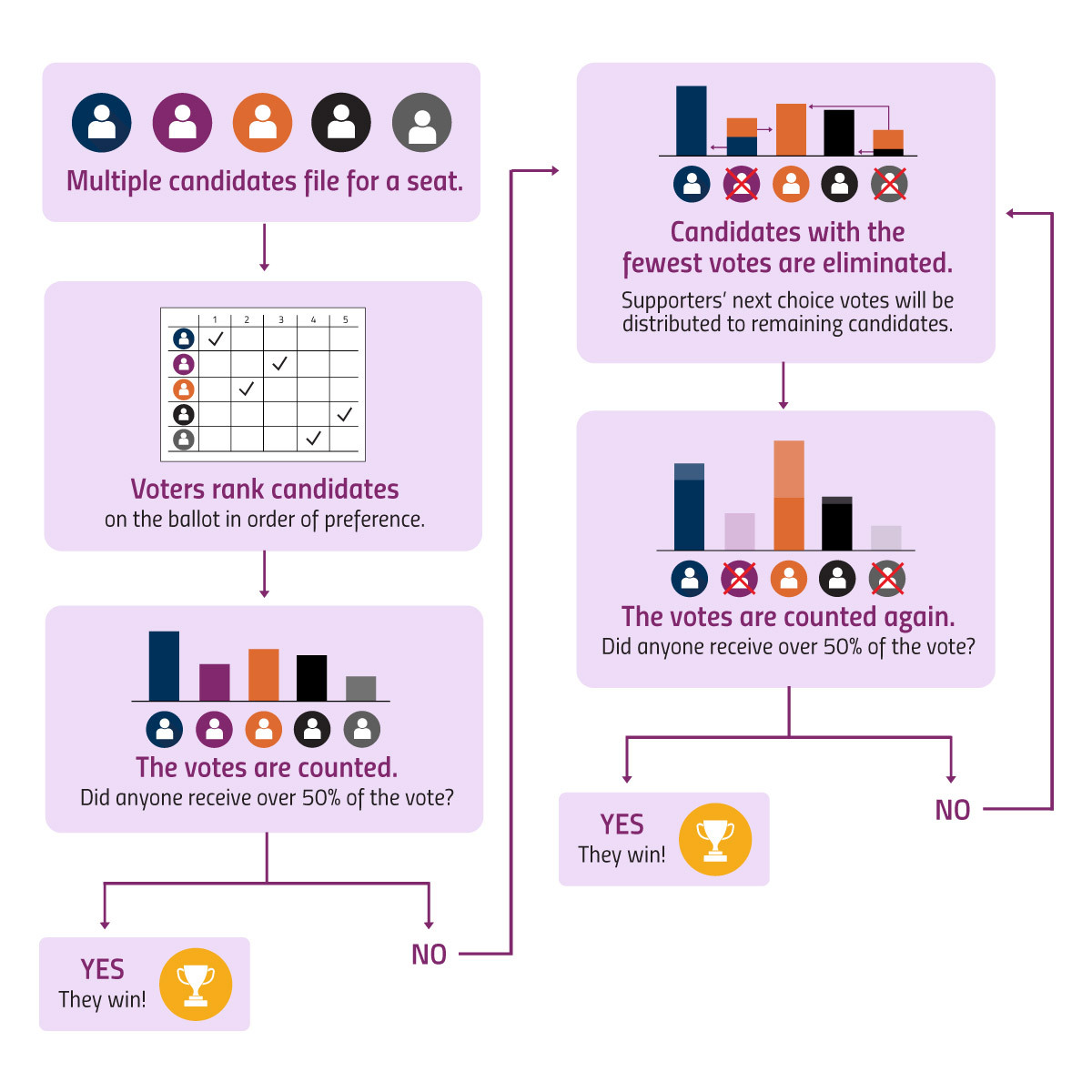Why Ranked Choice Voting?
We have so many choices in our everyday lives, so why do elections seem to come down to an uncomfortable choice between only two options? Our “choose one,” first-past-the-post system often results in election winners who benefit from a wide field of candidates and end up representing only a small portion of the electorate.
Ranked Choice Voting (RCV), also known as instant-runoff voting, is an electoral system where voters rank candidates based on their preferences. With RCV we have the freedom to vote for our favorite candidates without fear of “wasting” our vote. If your top candidate does not win, your vote still counts toward your second preference, third, and so on until there is a candidate with a majority of the votes.
The Benefits
- Voters have more choices. Lots of potential candidates want to run for office but don’t want to split their party’s vote. Now they can campaign without fear of acting as a spoiler.
- Winning candidates get support from the majority of voters. (In contrast, our current system of voting allows candidates to split the vote, resulting in winning candidates who are unpopular with most voters).
- Campaigns become more positive and civil. With Ranked Choice Voting, candidates aren’t incentivized to disparage their opponents, because they are trying to earn the second-choice votes of their opponents’ supporters.
- Elections are cheaper and easier. With RCV/IRV, there’s no need to hold a costly, low voter turnout runoff election. Campaigns can be shorter and cheaper, and voters only have to go out to the polls once.
Get Involved
More than ever, Americans are demanding more representative elections. If you support Ranked Choice Voting, now is the time to get involved.
